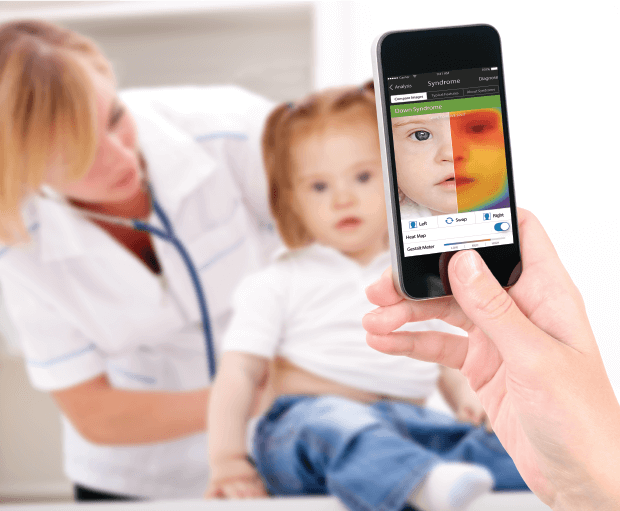Genetic Diagnosis Ehlers-Danlos syndrome
Genetic diagnosis for Ehlers-Danlos syndrome
What is Ehlers-Danlos syndrome?
It is a rare connective tissue disorder. There are several main types of the syndrome, each varying in their severity and cause.
EDS Classic/Musculocontractural Type 1 and Type 2
This is not the most common form of the syndrome. It is slightly more severe than the most common form of this rare disease, as it presents with additional symptoms, including fragile and stretchy skin, and possible heart issues. This form of the syndrome is caused by mutations in the CHSTI4 gene.
EDS Hypermobility Type 3
This is the most common form of the syndrome, the main symptoms of which include constant joint pain, and very flexible or hypermobile joints. The precise gene responsible for this type of the syndrome has yet to be identified.
This is the rarest form of the syndrome. It is also the most severe form. Its symptoms are more severe and include a higher risk of organ rupture and damage, and torn blood vessels. It is caused by mutations in the COL3A1 gene.
The fact that there are three possible forms of the syndrome, each with their own cause and additional symptoms, can make genetic diagnosis for Ehlers Danlos syndrome, difficult in general.
Symptoms
Symptoms of the syndrome are usually identified during childhood and may include any of the following:
- Delayed walking accompanied by joint hypermobility (highly flexible joints)
- Abnormal bruising and bleeding (more severe bruising than normal, frequent bruising)
- Unexplained vessel rupture
- Fragile skin, including obvious scarring
- Hyper flexibility of the joints, including increased risk of joint dislocations
- Hollow organ rupture (in more severe cases)
- Unique Ehlers-Danlos facial features– a thick build, thin lips and a small mouth, clubfoot, low muscle tone.
Genetic diagnosis for Ehlers-Danlos syndrome
Diagnosing Ehlers Danlos syndrome may involve genetic testing. This will attempt to identify, by analyzing a sample of an individual’s blood, the precise gene mutation responsible for causing the different types of the syndrome.
However as the most common form of the syndrome, Type 3, has as yet no identified gene known to cause it, and thus genetic testing can not necessarily be relied upon to deliver an accurate result and diagnosis.
Genetic diagnosis and testing for Ehlers Danlos syndrome will differ according to the type of syndrome suspected.
EDS Type 1 and 2: genetic testing for these types of the syndrome will generally involve a blood test to identify the CHSTI4 gene responsible for causing it. However it is known that this testing only discovers around 50% of all cases. This means diagnosis rests on the expertise and experience of a geneticist and genetic counselor responsible for the diagnosis process.
EDS Type 3: there is currently no genetic testing available for this form of the condition. This is because the gene mutation is as yet unknown. A diagnosis will rely on an understanding of the symptoms involved, and the physical and medical health of an individual.
EDS Type 6: for this rare form of the syndrome, genetic testing is available in order to identify the COL3A1 gene mutation, which causes it.
Misdiagnosis
Genetic diagnosis for Ehlers-Danlos is fraught with challenges. Ehlers-Danlos misdiagnosis is high, with up to 56% of patients being misdiagnosed on their way to an ED diagnosis.
This is in part due to a continued lack of understanding into the causes of the syndrome, which in turn creates a situation, where most types of the syndrome can be diagnosed based on a physical exam alone. This means genetic diagnosis for Ehlers Danlos racists in the expertise of those involved in making the diagnosis.
Genetic Counseling
Genetic counseling is an important part of the genetic diagnosis process for all rare diseases. When faced with a possible diagnosis of Ehlers-Danlos syndrome, genetic counseling is important for the following reasons:
- It will emotionally support rare disease patients and their families through the testing process.
- It will understand the difficulties involved in diagnosis of this rare disease, including the high rate of misdiagnosis and lack of accuracy. Access to quality and consistent genetic counseling services, helps reduce the rate of misdiagnosis across all rare diseases, and is especially important in the diagnosis of Ehlers-Danlos, where accurate Ehlers-Danlos genetic testing methods are missing.
- It will explain the symptoms of the syndrome, including recommendations for early intervention and treatment, and understanding them in order to ensure a more accurate diagnosis.
- It will help coordinate the medical staff and professionals involved in the long term care of someone with Ehlers-Danlos syndrome.
A genetic diagnosis of Ehlers Danlos syndrome will be life changing for many families. Receiving an accurate diagnosis is an important first step, in order to make sure that the lifelong management of the syndrome ensures the best care for the individual diagnosed.
The more we understand about how Ehlers Danlos can be diagnosed, and how rare disease patients can be supported both during their diagnostic journey, and after it, the better the long term care outcomes will be.







